Master Pool Maintenance: Decoding Pressure Gauge Readings
November 26th, 2024
November 26th, 2024
In the realm of pool maintenance, the pressure gauge often occupies an understated yet crucial role. This tiny instrument, perched on top of your pool filter system, does more than just display numbers; it acts as an early warning system, flagging potential issues before they escalate into costly repairs. Growing up, my family had an old pool that seemed to have a mind of its own. Whenever the pressure gauge indicated a spike or a drop, it was as if it whispered secrets about the filter's condition that we had to decode.
First-time pool owners might feel overwhelmed at the sight of this gauge, but familiarity with its readings can reveal vital insights. A sudden leap in pressure might suggest your filter is struggling, perhaps clogged with debris or overdue for a cleaning. Conversely, a sharp decline could indicate a leak or malfunction. Both scenarios call for immediate attention, often saving you time and money down the line.
Understanding the nuances of your pool filter pressure gauge isn't merely about numbers—it's about knowing your pool intimately. Regularly checking this gauge prevents small issues from snowballing. It’s much like listening to your car’s engine; it speaks its own language. By tuning into these subtle signs, you ensure that your pool remains a place of relaxation rather than a source of stress. Embracing this small task can lead to a more significant appreciation of your pool’s overall health.
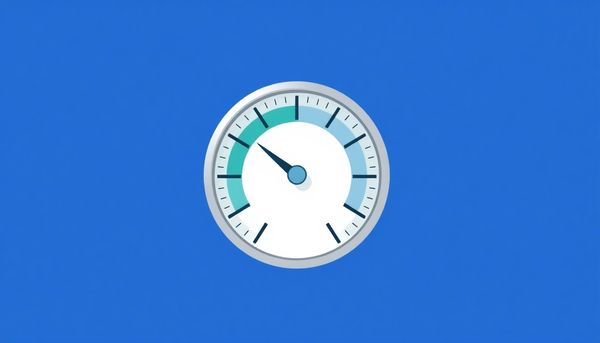
In the realm of pool maintenance, the pressure gauge acts as a vigilant sentinel, quietly keeping tabs on the health of your aquatic haven. This seemingly minor device holds the power to prevent future headaches by signaling issues before they snowball into costly repairs. For instance, on a scorching summer day, you might notice the gauge needle creeping beyond its usual mark. While it might seem alarming, this can often mean that your filter is doing its job with a little extra help from accumulated debris, enhancing its filtration efficiency.
Establishing your pool’s baseline pressure is like tuning a musical instrument. When the system is new and pristine, note the gauge reading, as this will be your reference point for the future. If the needle edges 10 psi above this baseline, it’s time to clean the filter. A simple rinse might suffice, but occasionally, the filter media requires replacement to maintain optimal performance.
Conversely, a dip below the usual pressure might hint at a blockage or, less frequently, a leak. Check all components diligently—from skimmers to pump baskets—to ensure smooth water flow. If everything appears in order and the gauge still misbehaves, it might be time for a new one. These devices are affordable and integral to maintaining your pool’s vitality, serving as silent guardians against potential malfunctions. Regularly monitoring this small gauge ensures not only the longevity of your equipment but also the continued enjoyment of your crystal-clear waters.
When glancing at your pool filter pressure gauge, you're not just observing numbers, you're gaining insight into the heartbeat of your pool's circulation system. These readings, measured in pounds per square inch (psi), provide crucial data about how effectively your filter is operating. A typical reading might range anywhere from 10 to 25 psi, but your specific pool system will have its own "normal" baseline. Establishing this baseline involves noting the gauge reading when your filter is newly installed and clean. Consistently checking this baseline helps you identify shifts that signal potential issues.
A rise in pressure, for instance, could mean that the filter is doing its job a bit too enthusiastically, trapping more debris than it can handle. This isn't immediately alarming, as a slightly dirty filter can be marginally more effective. However, should the pressure soar 10 psi above your established normal, it's time to examine and clean the filter. Failing to address this can lead to inefficiencies and potential damage to your equipment.
Conversely, a drop in pressure might indicate blockages pre-filter or, more seriously, a system leak. Even the gauge itself can occasionally falter, necessitating replacement. Regular attention to your pressure gauge allows you to catch and rectify these issues swiftly, ensuring your pool remains a pristine oasis rather than a source of ongoing frustration.
A pool's heart beats through its filter, and keeping that rhythm steady hinges on maintaining optimal filter pressure. Consider this: you’ve set up your filter, recorded the initial pressure, and life is good. But just like a car engine, it needs periodic checks to ensure everything runs smoothly. Checking your pool filter pressure gauge weekly is akin to regular oil changes in your vehicle—essential for longevity and efficiency.
Once you've noted your normal pressure range, an occasional slight rise can be advantageous. A slightly dirty filter can trap finer particles, effectively enhancing filtration. However, if that pressure climbs 10 psi above your baseline, it’s a signal—not to panic, but to act. A simple cleaning might be all that's needed to restore balance, but should the pressure remain stubbornly high, replacement of the filter media could be in order.
Conversely, a drop in pressure often indicates a blockage. Thoroughly inspect areas such as the skimmers, pump basket, and drain covers. A persistent issue might suggest a system leak, often around the pump. For the keen observer, these signs serve as clues to maintain harmony in your pool’s ecosystem.
Remember, your gauge is your guide, not a tyrant. If all else fails and the pressure gauge continues to misbehave, it might be time for a new gauge. With diligence and a bit of attentiveness, your pool will thank you with crystal-clear waters and fewer headaches.
Maintaining the delicate balance of pressure in your pool filter is akin to tuning a musical instrument. You wouldn’t expect a guitar with loose strings to sound right, and similarly, an off-kilter pressure in your pool filter can lead to suboptimal performance or even damage. Let's unravel what those numbers on the gauge really mean and how to address fluctuations.
High pressure often hints at a filter needing attention. As your filter gathers debris, the pressure naturally rises. A modest increase can actually help trap more dirt, but a surge—say, 10 psi above your baseline—signals it’s cleaning time. A clean filter helps maintain clear water and prevents overstressing the system. If cleaning doesn’t help, inspect the filter media; replacement might be necessary.
On the flip side, low pressure is often due to restricted water flow or leaks. Start by checking obvious culprits like skimmers and pump baskets for blockages. A leak, particularly around the pump, requires careful inspection. Listen for unusual sounds or look for water where it shouldn’t be. Addressing these promptly keeps your pool running efficiently.
Remember, if pressure issues persist despite all troubleshooting, the gauge itself might be faulty. Replacing it is a simple, cost-effective fix. By keeping your eye on the gauge and interpreting its signals wisely, you ensure your pool remains a sparkling oasis.
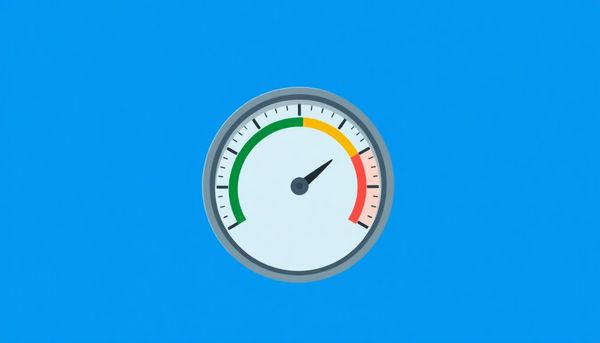
In the realm of pool maintenance, the pressure gauge is akin to a trusted advisor, quietly guiding you through potential pitfalls. When it comes to identifying common pressure problems, the gauge's subtle shifts in numbers are your first line of defense. A rise above your established normal can signal that the filter is simply doing its job a bit too well, catching debris effectively. However, should the pressure soar more than 10 psi above your baseline, it's time to roll up your sleeves and inspect the filter. Often, a thorough cleaning will return the pressure to its rightful place.
Conversely, low pressure readings can present a different set of challenges. If the gauge reports a dip of 5 psi or more below your usual standard, it suggests a disturbance upstream from the filter. This situation often arises from blockages in the skimmer, pump basket, or impeller, which restricts water flow. If these components are clear, yet the pressure remains low, a more elusive culprit could be at play—such as a leak in the system, commonly found around the pump.
Should all else appear in order and the gauge continues to misbehave, don't overlook the possibility of a faulty gauge itself. Like any tool, it can succumb to wear and tear over time. A quick replacement, costing less than a dinner out, could resolve the issue. Always remember, consistent monitoring and prompt action are key to maintaining a harmonious aquatic environment.
In the world of pool maintenance, the pressure gauge might seem unassuming, yet it acts as the pulse of your pool's filtration system. Regularly checking this small device is akin to taking the pulse of a patient. A quick glance each week can prevent minor issues from snowballing into costly repairs.
Each pool has its own personality, with a unique pressure baseline influenced by factors such as pump size and filter type. When setting this baseline, it's crucial to remember the initial reading taken under optimal conditions—clean media, a well-functioning pump, and debris-free water. This benchmark becomes your guide, revealing when the system is slightly stressed or severely strained.
A personal anecdote might resonate here: my neighbor once ignored a slight rise in his gauge reading, thinking it was a fluke. A week later, his pump overworked itself to failure. This could have been avoided with a simple filter cleaning.
Keep a journal or digital log of weekly readings. This helps to spot trends and deviations early on. If the gauge hints at a problem, a quick inspection of your skimmer, pump basket, and filter media might save you from unexpected headaches. Detecting blockages or air pockets promptly not only protects your equipment but ensures your pool remains that perfect backyard oasis. In short, investing a few minutes each week in your pressure gauge can reward you with a season of trouble-free swimming.
Establishing baseline pressure levels for your pool filter might seem like a trivial task, yet it forms the bedrock of effective pool maintenance. Back when I first installed my pool, I underestimated the importance of this small gauge. It wasn’t until a friend, an experienced pool owner, pointed it out that I realized its critical role. This unassuming dial provides a snapshot of your pool's overall health, similar to how a heartbeat reflects a person’s well-being.
To begin, set your baseline pressure level during optimal conditions. This means when your filter is freshly installed, the media is clean, and all pool equipment, including the pump, is functioning smoothly. Start by observing the pressure gauge right after installation. This initial reading becomes the reference point for normal operations.
Don't stop there. After the first cleaning or when you replace the filter media, take another reading. This creates a range to compare against, allowing you to spot changes that could indicate issues like blockages or leaks. Regular checks ensure you're not caught off guard by unexpected fluctuations.
Weekly gauge inspections should become a ritual. Much like checking the oil in your car, this habit prevents minor issues from escalating into costly repairs. Recording these readings provides a historical perspective, making it easier to identify trends and troubleshoot potential problems. This proactive approach not only saves time but also extends the life of your pool equipment.
Every pool owner has likely encountered that moment when the pool filter pressure gauge decides to play hard to get, displaying numbers that make no sense. This tiny device can sometimes be a messenger of doom or salvation, depending on how you interpret its signals. Abnormal pressure readings can be unsettling, but addressing them is usually straightforward once you get the hang of it.
When confronted with higher pressures, it's tempting to panic. However, a slightly elevated pressure can signify that your pool filter is working harder because it’s a bit dirty. This might actually enhance filtration temporarily—think of it as the filter using existing debris to catch more debris. But when pressure exceeds your baseline by 10 psi, it’s a clear sign to roll up your sleeves and clean the filter media. If the pressure remains stubbornly high post-cleaning, replacement of the filter media is the next step.
Now, on the opposite end, low pressure readings often suggest something is hindering water flow before it reaches the filter. A quick inspection of the skimmers, pump basket, and drain covers might reveal debris that needs clearing. More ominously, low pressure might indicate a leak, usually around the pool pump area. Thoroughly inspect the pump for leaks and address any issues promptly.
If none of your troubleshooting efforts change the stubborn low or high readings, the gauge itself might be the culprit. Like any mechanical part, it could fail over time. Fortunately, replacing a faulty gauge is easy on the pocket and can quickly restore peace of mind. Understanding these nuances and acting swiftly can save you from bigger headaches and keep your pool blissfully clear.
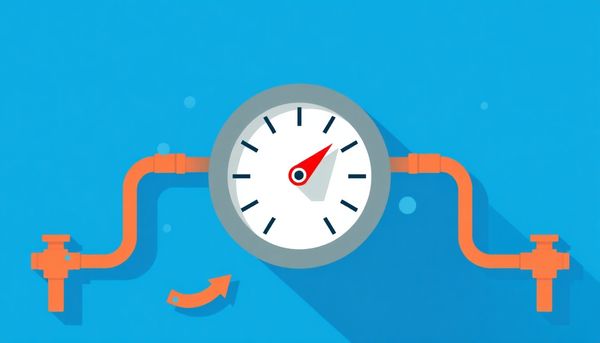
Keeping your pool clear and sparkling starts with understanding the delicate dance of pressure levels in your filter. That small dial on the top of the filter isn't just for show; it's your pool's secret informant. It whispers to you about changes before they snowball into bigger issues. My backyard pool, for instance, became a troublesome swamp one summer, all because I ignored its subtle warnings.
Each pool filter has its own personality, influenced by factors like size, pump strength, and even how clean it is. To get acquainted with yours, begin by noting the psi reading immediately after installing a clean filter. This number will be your benchmark, your North Star guiding routine maintenance. The first time I did this, it was eye-opening to see how the pressure shifted with the slightest change in the filtration system.
Consistently, I check my gauge weekly, scribbling the readings in a little notebook. You'd be surprised how quickly you notice patterns. A slight rise in pressure? It might just be a sign your filter is picking up more debris and doing its job. But if it spikes 10 psi above normal, it's time to roll up your sleeves and clean or consider replacing the filter media.
Remember, a low-pressure reading isn't innocent either. It often indicates a blockage or, worse, a leak. The filter gauge is like a trusty friend, guiding you through potential pitfalls. By keeping an eye on it and acting swiftly when necessary, you protect your pool and your wallet from unpleasant surprises.
Regularly keeping an eye on your pool filter pressure gauge can save you from future headaches. Think of it as a silent sentinel, unobtrusively doing its job until something goes awry. One summer, while lounging by my own pool, I noticed the gauge showed significantly higher pressure than usual. A quick filter cleaning restored normalcy, reminding me how essential these checks are.
Incorporating pressure checks into your routine ensures issues are caught early. Begin by setting a baseline when your system is new or freshly cleaned. This baseline, unique to your setup, becomes your reference point. Record it diligently. With this figure in mind, weekly inspections allow you to spot deviations from the norm and act promptly.
High readings, while initially concerning, aren't always disastrous. A slightly dirty filter can actually improve filtration, but a significant rise—say, 10 psi above your baseline—signals it's time for action. Cleaning the filter usually resolves this, but consistent high pressure might indicate that new media is necessary.
On the flip side, low pressure can indicate blockages or leaks. A thorough check of the system, from skimmers to pump impeller, typically identifies the culprit. Occasionally, persistent pressure issues suggest a faulty gauge rather than a system problem, necessitating a simple replacement.
By integrating these checks into your maintenance schedule, you ensure the smooth operation of your pool, preserving your oasis's health and your peace of mind.
High-pressure readings on a pool filter pressure gauge might initially seem like a daunting issue, but with a few targeted steps, clarity is within reach. When your gauge starts creeping significantly above the established normal range, it's time to take a closer look. Oftentimes, a dirty filter is the culprit. Before you panic, remember that a slightly dirty filter can actually improve filtration efficiency, but when the pressure rises 10 psi above your normal level, it's time for a clean. Removing debris and rinsing off accumulated dirt can often resolve the issue.
If cleaning the filter doesn’t reduce the pressure, another possibility could be trapped air in the system. Air interference happens, especially if the pool's water level has dropped or if the filtration system has been recently restarted. Utilizing the air relief valve can swiftly expel any trapped air, allowing water to flow smoothly and reducing pressure build-up.
It’s not just about air and dirt, though. Inspect the skimmer baskets and pump impeller for obstructions. Blockages here can constrict water flow, pushing pressure to unwelcome heights. In some cases, replacing the filter media might be necessary if it's overly clogged or worn out.
Lastly, if high pressure persists despite these efforts, consider the health of the gauge itself. Sometimes, it’s the gauge that’s faulty, not the system. Swapping it out for a fresh one is a small investment that can restore accuracy to your pool maintenance routine.
A pool filter pressure gauge gently whispers its secrets when it dips below the usual psi. An unexpected drop might suggest that your filter is feeling a bit under the weather. A close friend once shared a tale of their pool filter pressure suddenly plummeting. Not being one to ignore such signs, they began their investigation by scanning the pool's perimeter like a detective eager to solve a mystery.
Begin by scrutinizing the skimmers, pump basket, and pool drains. A daring leaf or mischievous twig could be sabotaging the water’s journey, obstructing the flow before it even reaches the filter. Once, as my friend discovered, a forgotten pool toy lodged in a skimmer was the culprit. Swiftly removing it restored the filter’s pressure to its happy norm.
On more serious occasions, a low-pressure reading could hint at a pesky leak somewhere in the maze of your pool system. A leak in the pool pump is often the prime suspect. Thoroughly inspect the pump for any telltale signs of moisture or disquieting drips. If a leak is evident, it might be time to call in the professionals or, if you’re handy, tackle a DIY repair.
Should all these checks yield no results, your trusty gauge might be fibbing. Faulty readings from a worn-out gauge are not uncommon, and replacing it can be a simple fix to ensure your pool remains a sparkling oasis. Regular vigilance can help you catch such issues early, saving both time and money in the long run.
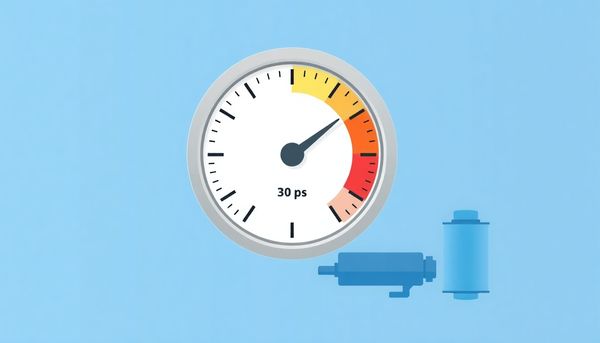
Encountering low-pressure issues on your pool filter gauge can be as mystifying as a detective novel. You find yourself wondering why the gauge is giving you such a low psi reading. Yet, like any good mystery, the clues are often right in front of you. First, examine the skimmer and pump basket for debris. Leaves and other clutter can cause a blockage, preventing water from reaching the filter efficiently. It's a straightforward fix, yet often overlooked.
Another potential culprit is your pump's impeller. This small, often forgotten component can easily get clogged with debris. A thorough inspection and cleaning might just solve your pressure problem. A more serious issue could be a leak. Inspect the pool pump and plumbing lines for any signs of water escaping. A wet spot around your pump can hint at this. If a leak is found, it’s crucial to address it swiftly to prevent further complications.
If, after all these checks, the pressure gauge still insists there's a problem, it might be time to consider the gauge itself. Gauges can fail over time due to wear and tear or damage. Replacing it is not only cost-effective, usually under $20, but also ensures accurate readings in the future. By keeping a keen eye and addressing these potential issues, you ensure your pool remains a sparkling oasis under the sun.
Keeping a close eye on pressure-level changes in your pool filter can be akin to watching over a simmering pot that could boil over or cool down too much. Each shift in the gauge needle carries a story about the state of your pool's filtration system. A rise in pressure beyond your established norm might initially seem alarming, yet it often indicates your filter is doing its job. As debris accumulates, it aids in capturing even finer particles. However, if you notice an increase of 10 psi or more, it's time to give your filter a thorough cleaning. A routine cleanse can often restore balance and efficiency.
Conversely, a pressure reading falling below normal suggests water isn't reaching the filter effectively. This can result from obstructions like leaves clogging skimmers or pump baskets. On rarer occasions, a hidden leak within the system might be the culprit, and addressing this swiftly is crucial to avoid further complications.
Imagine your pressure gauge as a detective, subtly hinting at the stories behind the scenes. By regularly checking this vital component, you can preemptively address potential issues. While it might be a small device, it provides invaluable insights into the heart of your pool's operations. A healthy gauge ensures a healthy pool, sparing you from costly repairs and ensuring endless days of clear, inviting water.
When the pool filter pressure gauge wavers from its normal range, it's a signal that something might be amiss. Have you ever found yourself standing poolside, wondering why the water isn't as clear as last weekend? Often, the culprit lies in some form of blockage.
Start by inspecting the pool skimmers and pump baskets. Leaves, twigs, and other debris can accumulate, restricting water flow. A simple cleaning might just do the trick. If the pressure remains stubbornly high or low, shift your focus to the pump impeller. Often overlooked, this small component can become jammed with debris, hindering the system's performance. Clearing it can restore the flow to its optimal state.
In some cases, the issue might not be a blockage at all but rather air trapped within the system. Low water levels in the pool can allow air to sneak in, leading to pressure imbalances. Adjusting the water level or using the air relief valve can solve this problem.
If all else fails and the pressure gauge still shows anomalies, it's wise to consider whether the gauge itself is faulty. Much like a clock that stops ticking, a gauge can sometimes give inaccurate readings simply because it's time for a replacement. With these steps, you'll ensure your pool's heart—its filter—beats smoothly, maintaining crystal-clear waters without fuss.
A hidden hero in the realm of pool maintenance, the air relief valve quietly ensures everything runs smoothly. Often overlooked, this small component acts as a pressure regulator, preventing potential damage to your pool system. Imagine relaxing by the pool, only to notice an unexpected spike in your pressure gauge. While a quick cleaning might be your initial thought, releasing air trapped in the system could be the simple solution you need.
Air in the system often sneaks in when the pool’s water level dips too low or after turning off the system for maintenance or a vacation. When you restart, air competes with water for space, leading to increased pressure and potential strain on your equipment. By gently opening the air relief valve, you allow the trapped air to escape, normalizing the flow. This straightforward action safeguards your pump and plumbing, letting water circulate freely as intended.
My own pool once faced this air entrapment issue after a long winter break. The pressure gauge hinted at trouble, and a quick inspection revealed the culprit. A swift release of air through the valve brought everything back to normal, saving time and worry. Remember, the air relief valve is your silent ally, ready to keep your pool's heart beating smoothly. Keep an eye on that gauge, release the air when necessary, and enjoy the peace of a perfectly balanced system.
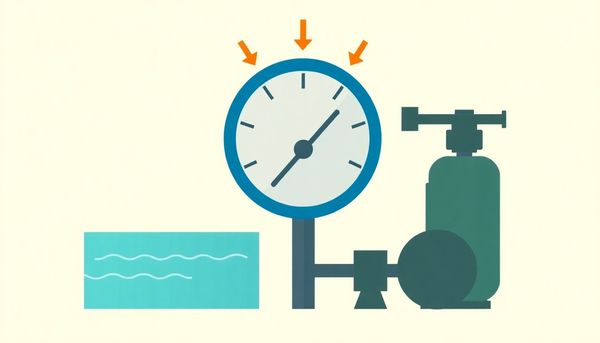
Navigating the intricacies of pool maintenance often brings you face-to-face with tools that seem unassuming at first glance. The air-relief valve, for example, quietly resides alongside the more noticeable pool filter pressure gauge, yet plays a crucial role in maintaining your pool's health. This handy device assists in managing pressure levels by allowing trapped air to escape from the filter system, thus ensuring efficient water flow.
Consider those times when you return from a vacation and fire up your pool system, only to find the pressure gauge inching towards the higher end. That spike often hints at air trapped within the circulation system, vying for space against the incoming water. By simply opening the air-relief valve, you facilitate the release of this air, allowing water to flow smoothly and preventing potential damage to equipment like the pump.
During routine pool maintenance, making it a habit to check the air-relief valve could save you from unexpected headaches. If your pressure gauge fluctuates or behaves inconsistently, a quick inspection and release of any trapped air might be the simple solution you need. Incorporating this small step into your maintenance routine ensures your pool operates efficiently, prolonging the life of both the filter and the pump, keeping your aquatic retreat inviting and stress-free.
Regularly checking your pool filter's pressure gauge is akin to glancing at a dashboard while driving; it keeps you informed and in control. In the world of pool maintenance, this small, often overlooked tool can make the difference between a sparkling oasis and a murky mess. A friend once shared how neglecting this simple task led to a hefty repair bill when his filter malfunctioned. His tale serves as a cautionary note: consistent monitoring can prevent costly mishaps.
Each week, as you perform your pool maintenance rituals, make it a habit to jot down the current pressure reading. This practice is as essential as skimming leaves or adjusting chemical levels. Recording these numbers allows you to spot trends, such as a gradual increase that might suggest a filter needing cleaning, or a sudden drop pointing to a possible blockage. When you notice these changes, you can take swift action, ensuring your pool remains in peak condition.
A high reading isn’t always a red alert; sometimes, a slightly dirty filter captures more debris, enhancing its efficiency temporarily. However, once you hit 10 psi above your baseline, it’s time to roll up your sleeves and clean the filter. Conversely, if the pressure dips below your usual range, investigate potential blockages or leaks. Consider the gauge as your pool’s voice, subtly communicating its needs. Embrace this dialogue, and your pool will reward you with a crystal-clear experience, free from the worries of unforeseen repairs.
Occasionally, the pool filter pressure gauge may signal a high-pressure alert, demanding your immediate attention. While a slightly dirty filter can be more efficient, pushing the pressure gauge 10 psi beyond your established normal range warrants action. Begin with a simple cleaning of the filter; this often restores balance and lowers the pressure. If the pressure persists despite cleaning, it might indicate that the filter media is beyond salvation and needs replacement.
In some cases, the culprit behind high pressure is not dirt, but air trapped in the system. This can occur after the pool has been turned off for an extended period, or if the water level is too low. Air competes with water, causing a spike in pressure that can strain your pump. Utilize the air relief valve to release the trapped air, allowing water to flow smoothly and pressure levels to normalize.
Regular maintenance of the skimmers, pump basket, and drain covers can prevent obstructions that lead to pressure fluctuations. On rare occasions, persistent high pressure might signal a deeper issue. A leak in the system, particularly around the pump, can disrupt normal operations. Inspect these areas thoroughly for signs of leaks or damage.
Addressing high-pressure warnings promptly ensures your pool system remains in optimal condition, sparing you from costly repairs and maintaining your pool's health for enjoyable swimming experiences.
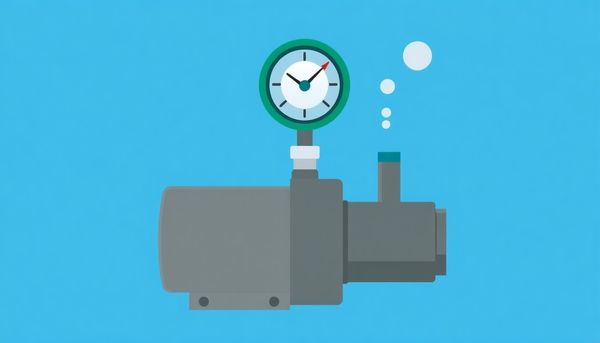
This article provided insights into maintaining your pool. Start your pool care journey today!
Want to become a pool maintenance expert? Our free Pool School course covers everything you need to know about pool care. From basic maintenance to advanced troubleshooting, you'll learn how to:
Join over 10,000 pool owners who have already transformed their pool care routine. Get started with our free Pool School course today!